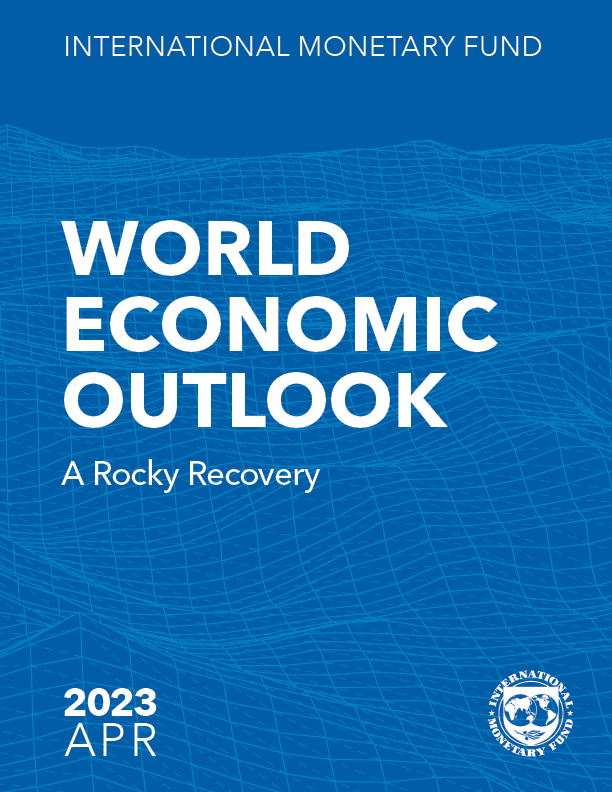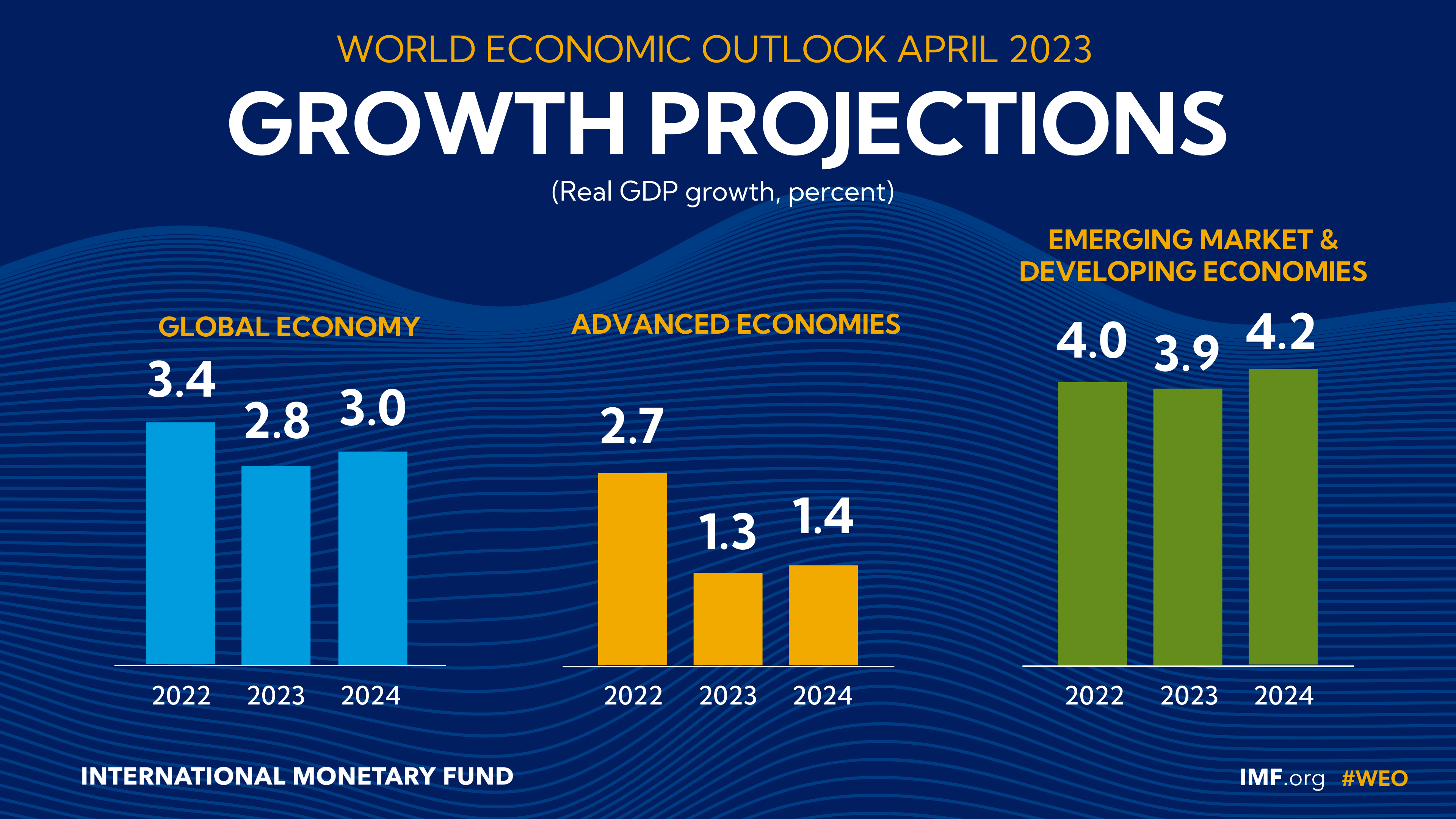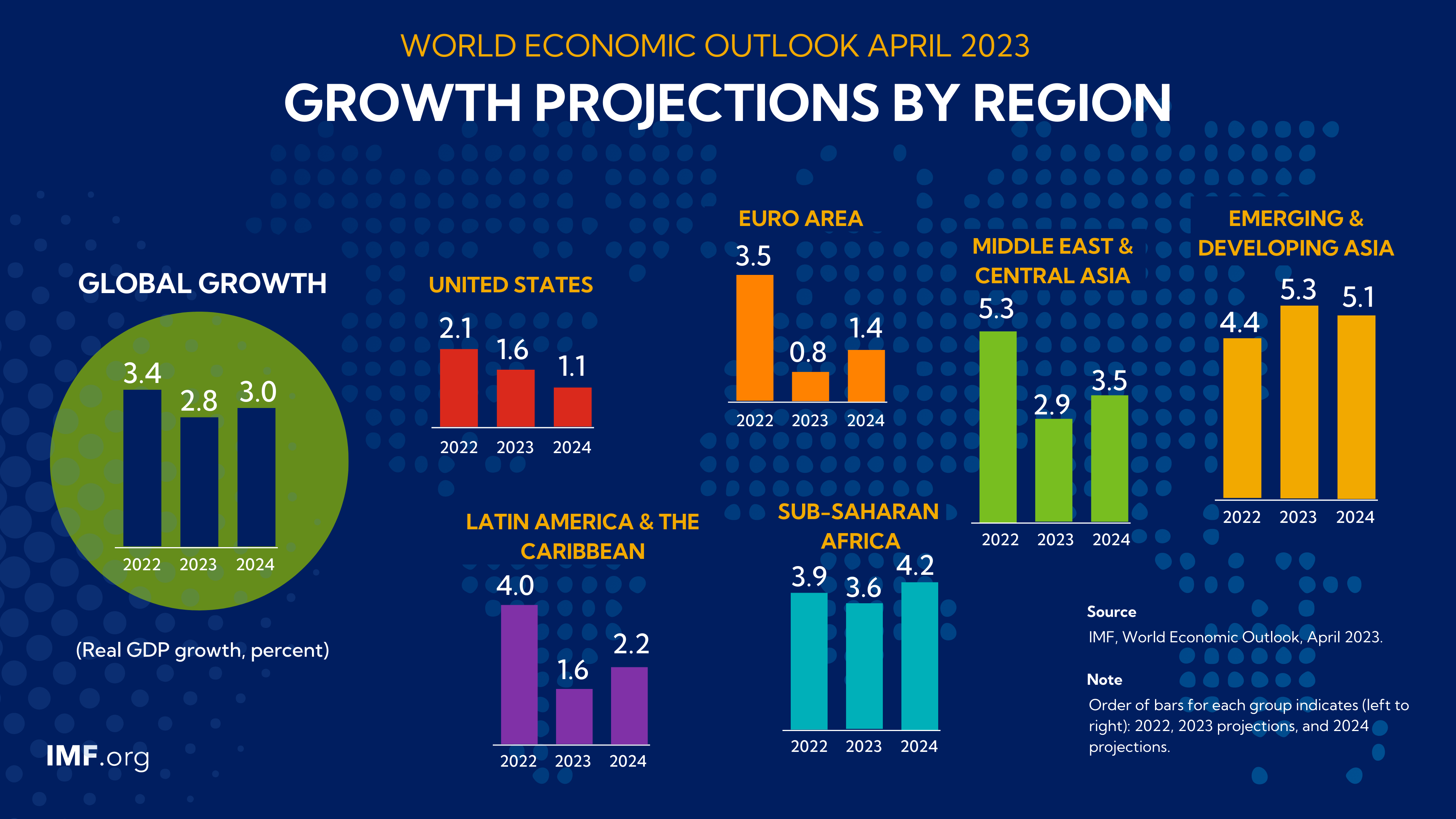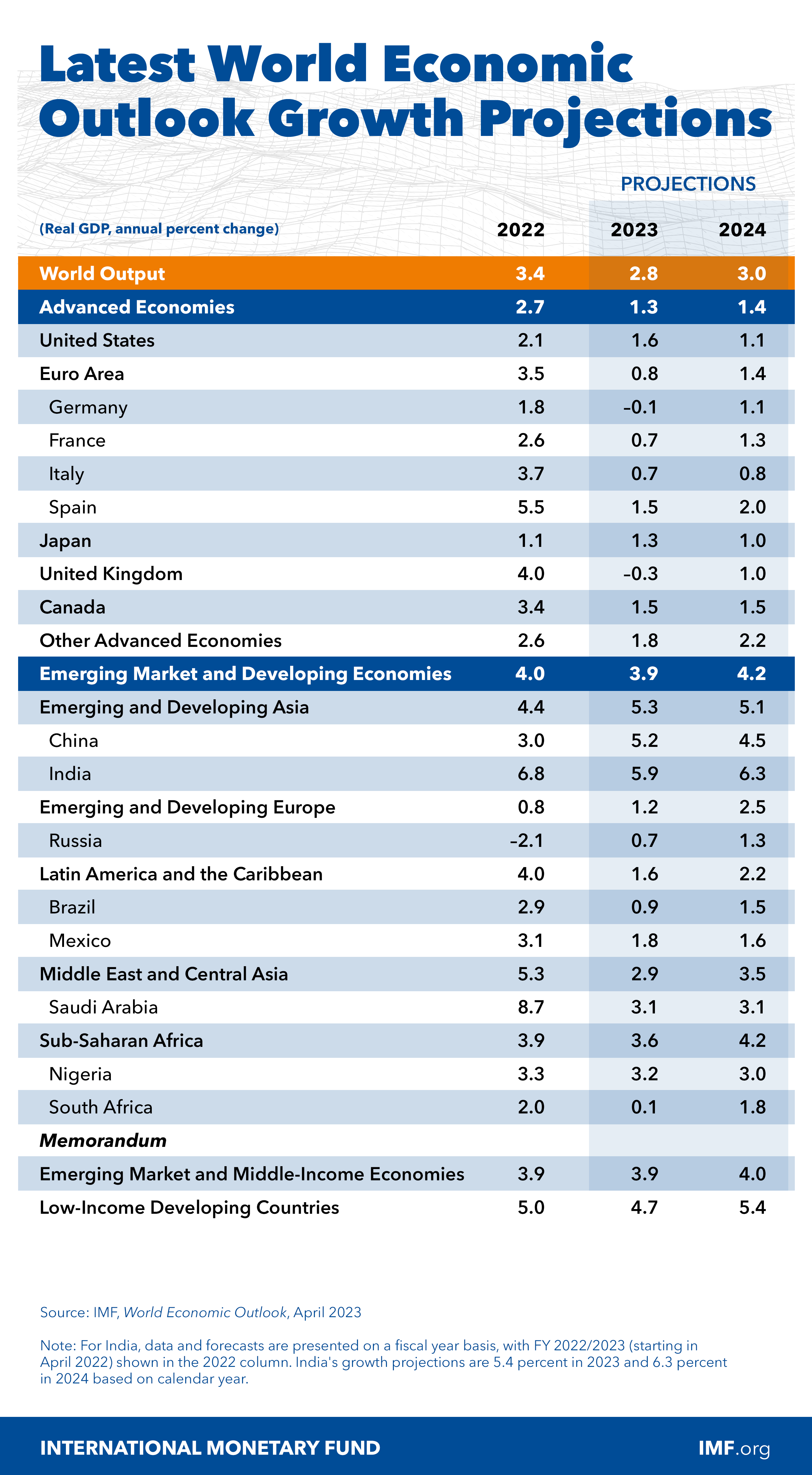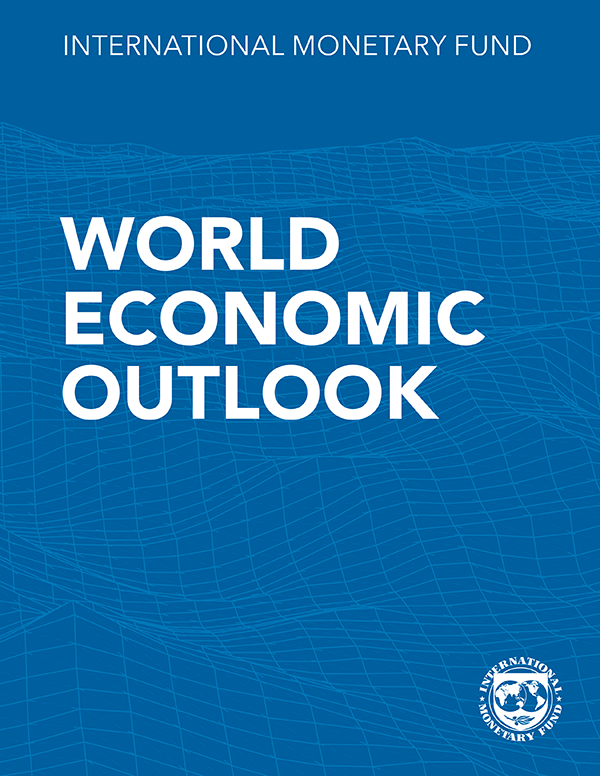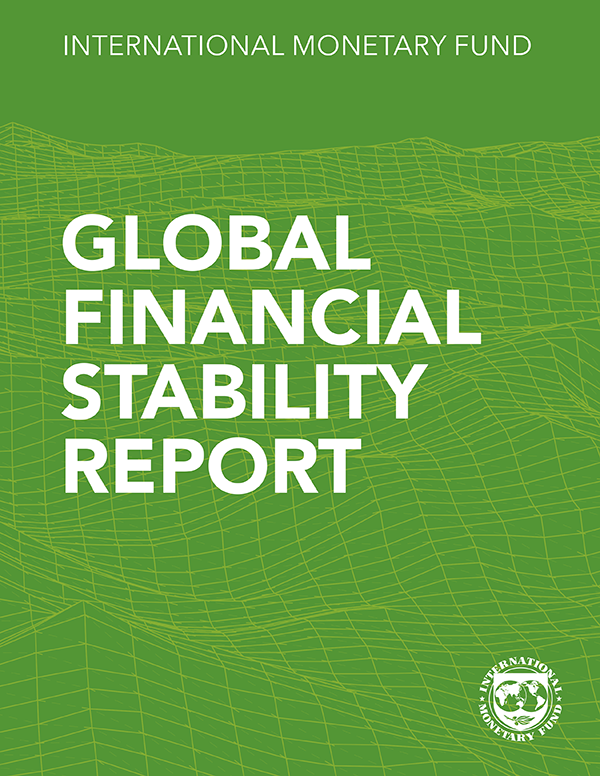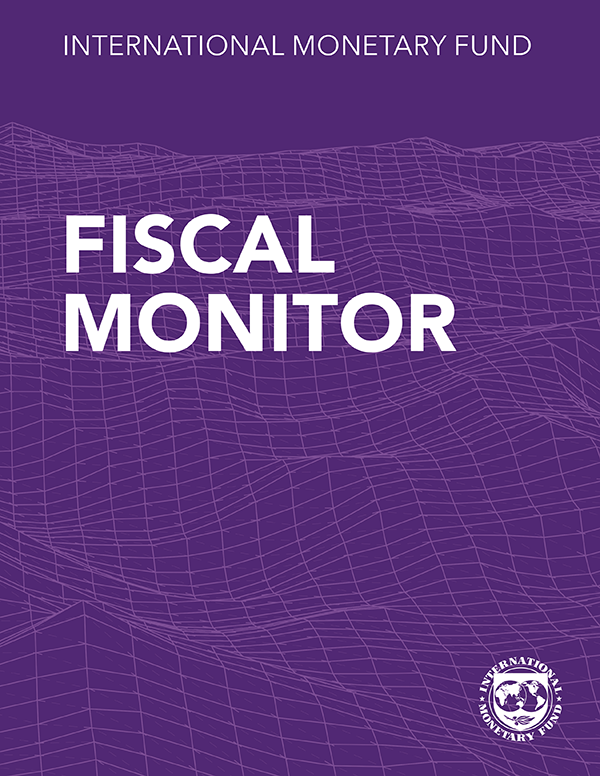The outlook is uncertain again amid financial sector turmoil, high inflation, ongoing effects of Russia’s invasion of Ukraine, and three years of COVID
The baseline forecast is for growth to fall from 3.4 percent in 2022 to 2.8 percent in 2023, before settling at 3.0 percent in 2024. Advanced economies are expected to see an especially pronounced growth slowdown, from 2.7 percent in 2022 to 1.3 percent in 2023. In a plausible alternative scenario with further financial sector stress, global growth declines to about 2.5 percent in 2023 with advanced economy growth falling below 1 percent. Global headline inflation in the baseline is set to fall from 8.7 percent in 2022 to 7.0 percent in 2023 on the back of lower commodity prices but underlying (core) inflation is likely to decline more slowly. Inflation’s return to target is unlikely before 2025 in most cases.
The natural rate of interest is important for both monetary and fiscal policy as it is a reference level to gauge the stance of monetary policy and a key determinant of the sustainability of public debt. Chapter 2 aims to study the evolution of the natural rate of interest across several large advanced and emerging market economies. Public debt as a ratio to GDP soared across the world during COVID-19 and is expected to remain elevated. Chapter 3 examines the effectiveness of different approaches to reducing debt-to-GDP ratios. Supply-chain disruptions and rising geopolitical tensions have brought the risks and potential benefits and costs of geoeconomic fragmentation to the center of the policy debate. Chapter 4 studies how such fragmentation can reshape the geography of foreign direct investment FDI and how it can affect the global economy.
Chapter 1: Global Prospects and Policies
Tentative signs in early 2023 that the world economy could achieve a soft landing—with inflation coming down and growth steady—have receded amid stubbornly high inflation and recent financial sector turmoil. Although inflation has declined as central banks have raised interest rates and food and energy prices have come down, underlying price pressures are proving sticky, with labor markets tight in a number of economies. Side effects from the fast rise in policy rates are becoming apparent, as banking sector vulnerabilities have come into focus and fears of contagion have risen across the broader financial sector, including nonbank financial institutions. Risks to the outlook are heavily skewed to the downside, with the chances of a hard landing having risen sharply.
Chapter 2: The Natural Rate of Interest: Drivers and Implications for Policy
The natural rate of interest—the real interest rate that neither stimulates nor contracts the economy—is important for both monetary and fiscal policy; it is a reference level to gauge the stance of monetary policy and a key determinant of the sustainability of public debt. Chapter 2 aims to study the evolution of the natural rate of interest across several large advanced and emerging market economies. To mitigate the uncertainty that typically surrounds estimates of the natural rate, the chapter relies on complementary approaches to analyze its drivers and project its future path. Overall, the analysis suggests that once the current inflationary episode has passed, interest rates are likely to revert toward pre-pandemic levels in advanced economies. How close interest rates get to those levels will depend on whether alternative scenarios involving persistently higher government debt and deficit or financial fragmentation materialize.
Chapter 3: Coming Down to Earth: How to Tackle Soaring Public Debt
Public debt as a ratio to GDP soared across the world during COVID-19 and is expected to remain elevated, posing a growing challenge for policymakers, particularly as real interest rates are rising across the world. Chapter 3 examines the effectiveness of different approaches to reducing debt-to-GDP ratios. Based on econometric analyses and complemented with a review of historical experiences, the chapter reaches three main conclusions. First, adequately timed and appropriately designed fiscal consolidations have a high probability of durably reducing debt ratios. Second, when a country is in debt distress, a comprehensive approach that combines significant debt restructuring—renegotiation of terms of servicing of existing debt—fiscal consolidation, and policies to support economic growth can have a significant and long-lasting impact on reducing debt ratios. Coordination among creditors is essential. Finally, economic growth and inflation have historically contributed to reducing debt ratios.
Chapter 4: Geoeconomic Fragmentation and Foreign Direct Investment
Supply-chain disruptions and rising geopolitical tensions have brought the risks and potential benefits and costs of geoeconomic fragmentation to the center of the policy debate. Chapter 4 studies how such fragmentation can reshape the geography of foreign direct investment (FDI) and, in turn, how FDI fragmentation can affect the global economy. FDI flows are increasingly concentrated among geopolitically aligned countries, particularly in strategic sectors. Several emerging market and developing economies are highly vulnerable to FDI relocation, given their reliance on FDI from geopolitically distant countries. In the long term, FDI fragmentation arising from the emergence of geopolitical blocs can generate large output losses, especially for emerging market and developing economies. Multilateral efforts to preserve global integration are the best way to reduce the large and widespread economic costs of FDI fragmentation.
Publications

-
March 2025
Finance & Development
- The Talent Equation

-
September 2024
Annual Report
- Resilience in the Face of Change

-
Regional Economic Outlooks
- Latest Issues




